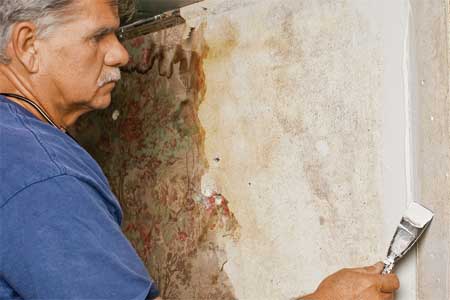1 Are there architectural faults that contribute to the growth of molds?
Yes.
2 If there are, what are they?
Molds come about from excessive moisture on building elements, mainly walling, roofing and flooring.

In designs where there are sunken spaces/living rooms and basements, and care to water proof the walls and floors has not been done, these elements will suck in moisture from the soil through capillary action.
In buildings, there is the bituminous membrane that is laid in between the floor surface and the 1st layer of stone. This membrane can also be replaced with heavy gauge black polyethene paper. If the contractor forgets to put this in place, the wall will suck in moisture from the ground and will result in mold growing on both sides of the wall. This will eventually make the wall weaker hence cracks.
3 What can be done to remedy such issues in homes that already have molds?
Use of paints and cement that contain anti bacterial properties will prevent the growth of molds in walls. Such cements are commonly used in bathrooms where its expected to have high moisture.

Anti bacterial paints are also used for outdoor plaster works where molds are common.
There are also anti bacterial ceramic tiles which are mainly used in ICU for hospitals.
4 What should a homeowner consider before constructing, in order to prevent molding?
A home owner needs to work with his architect to ensure that all chances of mold are looked into.
5 Are there specific areas in the home where the danger of molds is heightened?
Yes. Areas which have higher moisture such as kitchens, bathrooms and exterior wall surfaces.
6 Are there regions in the country where molds are more prevalent or does it happen everywhere?
Yes. Regions that have higher humidity eg the coast.
7 Does clutter in the home contribute to the growth of molds?
Yes. Especially inside wardrobes. Rooms should be designed with adequate natural light and ventilation so that fresh air can circulate abundantly.
8. What other architectural factors in and outside the home contribute to ill health and what can be done to prevent this?
Research studies have shown that exposures to building dampness and mold have been associated with respiratory symptoms, asthma, hypersensitivity pneumonitis, rhinosinusitis, bronchitis, and respiratory infections. Individuals with asthma or hypersensitivity pneumonitis may be at risk for progression to more severe disease if the relationship between illness and exposure to the damp building is not recognized and exposures continue.
Prevention of mold starts with the developer hiring architects who will design the building with prevention of mold in mind.
9. asbestos and the negative effect it has on health.
Asbestos has been proven to cause cancer especially lung cancer after long exposure.


Leave a Reply